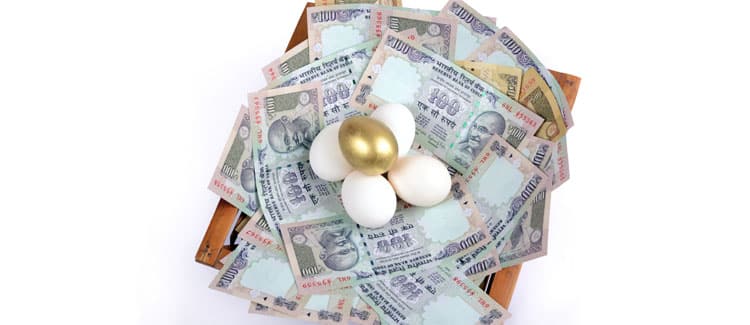Section 115BAC of Income Tax Act - Understanding the New Tax Regime
The Section 115 BAC (1A) introduced a new tax regime under the Income Tax Act, 1961. It allows individuals/ Hindu Undivided Families (HUF) and other groups to pay taxes at a lower rate. However, if you choose this new tax regime you will have to give up some of the common exemptions and deductions that are still available in the old tax regime.
What is Section 115 BAC of the Income Tax Act?
Section 115 BAC of the Income Tax Act introduced a new tax regime that lets you pay taxes at lower rates. This new tax regime is a default choice for your tax slabs, but you can switch back to the old tax regime after comparing your tax benefits. However, if you choose the tax structure under Section 115BAC, you cannot claim common deductions like travel allowance, House Rent Allowance (HRA), or benefits from best investment options like Unit Linked Insurance Plans (ULIPs), ELSS Scheme, or Tax-Saver FDs. If you prefer to keep these deductions, you will need to stick with the old tax system. The new tax regime option is meant to make taxes easier and cheaper for those who do not use many deductions.
Eligible Taxpayers under Sec 115BAC:
For the financial year 2024-25 (Assessment Year 2025-26), Section 115BAC applies to:
-
Individuals
-
Hindu Undivided Families (HUFs)
-
Associations of Persons (AOP); except co-operative societies
-
Bodies of Individuals (BOI); whether they are incorporated or not
-
Artificial Juridical Persons (AJP); as defined in Section 2(31)(vii)
Key Features of Section 115 BAC
-
Lower Tax Rates: Section 115 BAC allows you to avail of lower tax rates compared to the old tax regime. However, you won't be able to use most of the tax benefits with the new tax regime that are still available with the old tax regime.
-
Easier Calculations: With Section 115 BAC, you can avoid the hassle of complex deductions. You only need to provide information on your annual income and pay tax at the specified rate.
-
Fewer Deductions: In the new regime, you can not claim deductions like HRA, LTA, Section 80C, 80E, 80D, medical expenses, education loan interest, or amount invested in the best investment plans.
-
Standard Deduction Update: From FY 2024-25, the new tax system includes a standard deduction of ₹75,000 (up from ₹50,000 in FY 2023-24), while the old system still has a ₹50,000 deduction.
-
No Loss Carry Forward: If you choose the new tax regime in FY 2023-24, you won’t be able to carry forward any losses from the old system.
NOTE:
-
Choice Each Year: You can decide each year whether to stick with the old tax regime or switch to the new one, depending on what works best for your income and deductions.
-
Income Tax Calculator: You can use an income tax calculator to help estimate your tax liabilities under the old and new tax regimes for a better comparison.
Timeline of Section 115 BAC under the Income Tax Act, 1961
-
Budget 2019: Announced the new tax regime in the Union Budget.
-
Budget 2020: Section 115BAC comes into effect for the financial year 2020-21. It introduced a new tax regime with lower tax rates and the condition of forgoing certain exemptions and deductions.
-
Budget 2023: The new regime became the default starting from FY 2023-24. If individuals or HUFs prefer the old tax regime, they need to file Form 10-IEA before the ITR filing deadline.
-
Budget 2024: Proposed changes to the tax slabs under the new regime for FY 2024-25.
The new regime tax slabs as per the different annual budgets, are as follows:
| New Tax Regime as per Budget 2020 for FY 2020-21 | New Tax Regime as per Budget 2023 for FY 2023-24 | New Tax Regime as per Budget 2024 for FY 2024-25 |
| Income up to ₹2.5 lakh: No tax | Income up to ₹3 lakh: No tax | Income up to ₹3 lakh: No tax |
| ₹2.5 lakh to ₹5 lakh: 5% | ₹3 lakh to ₹6 lakh: 5% | ₹3 lakh to ₹7 lakh: 5% |
| ₹5 lakh to ₹7.5 lakh: 10% | ₹6 lakh to ₹9 lakh: 10% | ₹7 lakh to ₹10 lakh: 10% |
| ₹7.5 lakh to ₹10 lakh: 15% | ₹9 lakh to ₹12 lakh: 15% | ₹10 lakh to ₹12 lakh: 15% |
| ₹10 lakh to ₹12.5 lakh: 20% | ₹12 lakh to ₹15 lakh: 20% | ₹12 lakh to ₹15 lakh: 20% |
| ₹12.5 lakh to ₹15 lakh: 25% | Above ₹15 lakh: 30% | Above ₹15 lakh: 30% |
| Above ₹15 lakh: 30% | -- | -- |
New Tax Regime under Section 115 BAC for FY 2024-25
The Indian government introduced a revamped New Tax Regime under Section 115 BAC for FY 2024-25. Let us have a quick overview:
-
Simplified Slabs and Increased Basic Exemption Limit: The new tax regime is easier to understand, with fewer tax slabs and a higher basic exemption limit of ₹3 lakhs.
-
Reduced Tax Rates: You’ll find lower tax rates across all income brackets compared to the old regime.
-
Standard Deduction Benefit: Salaried individuals can enjoy a higher standard deduction of ₹75,000, which is ₹50,000 as per the old tax regime and the new tax regime in FY 2023-24.
-
Forgoing Exemptions and Deductions: To take advantage of the new regime, you will need to give up some exemptions and deductions, like those under Sections 80C, Section 80D, Section 80E, and HRA.
-
Expanded Applicability: The new regime isn’t just for individuals and HUFs anymore; it now includes Association of Persons (AOPs) other than co-operative societies.
-
Higher Tax Rebate Limit: The tax rebate limit in the new tax regime has increased to ₹7 lakhs on taxable income, up from ₹5 lakhs in the old regime.
Various Sub-Sections of Section 115 BAC of the Income Tax Act, 1961:
| Section/Sub-section | Description |
| 115BAC | New optional tax regime introduced for individual taxpayers. |
| 115BAC(1) | Lists tax rates for different income slabs under the new regime. |
| 115BAC(1A) | Allows individuals and Hindu Undivided Families (HUFs) to choose the new tax regime. |
| 115BAC(2) | Explains the rules and conditions for opting into the new tax regime. |
| 115BAC(3) | Explains how to opt into the new tax regime. |
| 115BAC(4) | Gives you the option to switch back to the old tax regime in later years if it works out better for you. |
| 115BAC(5) | Lists the specific exemptions and deductions you cannot claim under the new tax regime. |
| 115BAC(6) | This section clarifies that the new tax regime rules also apply to Hindu Undivided Families (HUFs). |
| 115BAC(7) | Describes situations where you might lose the option to use the new tax regime. |
| 115BAC(8) | Provides additional details on how to file your tax returns and comply with the new regime. |
Old Tax Regime and New Tax Regime for FY 2023-24:
The tax rates for the old vs new tax regime for Financial Year 2023-24 (AY 2024-25) are as follows:
| Tax Slab | Income Tax Rates (in % p.a.) | ||||
| Old Tax Regime (FY 2024-25) | New tax Regime (FY 2023-24) | New Tax Regime (FY 2024-25) | |||
| For Individuals/ HUFs (age < 60 years) | For Individuals/ HUFs (age 60 to < 80 years) | For Individuals/ HUFs (age ≥ 80 years) | |||
| 0 – ₹2.5 lakhs | NIL | NIL | NIL | NIL | NIL |
| ₹2.5 lakhs – ₹3 lakhs | 5% | NIL | NIL | NIL | NIL |
| ₹3 lakhs – ₹5 lakhs | 5% | 5% | NIL | 5% | 5% |
| ₹5 lakhs – ₹6 lakhs | 20% | 20% | 20% | 5% | 5% |
| ₹6 lakhs – ₹7 lakhs | 20% | 20% | 20% | 10% | 5% |
| ₹7 lakhs – ₹9 lakhs | 20% | 20% | 20% | 10% | 10% |
| ₹9 lakhs – ₹10 lakhs | 20% | 20% | 20% | 15% | 10% |
| ₹10 lakhs – ₹12 lakhs | 30% | 30% | 30% | 15% | 15% |
| ₹12 lakhs – ₹15 lakhs | 30% | 30% | 30% | 20% | 20% |
| > ₹15 lakhs | 30% | 30% | 30% | 30% | 30% |
Old vs. New Tax Regime: Which Income Tax Regime is Better in FY 2023-24?
You can save more money by choosing the right tax regime. Let us learn why you should choose the old tax regime over the newly introduced tax regime under Section 115 BAC:
-
More Deductions and Exemptions: You can claim tax deductions for investing the investment options like ULIP Plans, Child Education Plans, Pension Plans, PPF, NPS, and home loan interest.
-
Lower Effective Tax Rates: If you utilize your deductions well, your taxable income is reduced. This potentially brings you down to a lower tax bracket.
-
Flexibility: You have more control over your tax planning by choosing the old tax regime.
Tax Planning Tip: It is a good idea to decide on your tax regime at the start of the year to make planning easier. Compare the new and old regimes to see which is better for you. If you choose the old regime, remember to submit Form 10IEA before you file your return.
Right Time to Choose Between Old and New Tax Regime
-
For Salaried Employees
-
How to Choose: Start the Financial Year 2024-25 using the old tax regime and inform your employer. You can decide to switch to the new regime when you file your tax return in July 2024.
-
Tax Filing Deadline: Ensure you file your tax return by July 31, 2025, unless the deadline is extended.
-
Default Regime: If you don’t specify a choice, the new tax regime will be applied automatically. You can switch between regimes annually.
-
-
For Non-Salaried Taxpayers
-
How to Choose: Select the new tax regime when you file your return. There's no need to notify anyone during the year.
-
Opt-In/Opt-Out: Non-salaried taxpayers cannot switch between regimes annually. Once you opt out of the new regime, you cannot revert to it.
-
Deductions and Exemptions NOT Available under Section 115 BAC for FY 2023-24
The following tax deductions and exemptions are not allowed in the new tax regime under Sec 115BAC:
-
Section 80C, 80CCC, 80CCD (except 80CCD(2), 80JJAA): No tax breaks for investments and expenses like PPF, ELSS, tuition fees, and home loan principal payments.
-
Section 80D: You can't claim deductions for health insurance premiums.
-
Section 24(b): Interest paid on home loans isn't deductible.
-
Section 80E, 80EEA: No deductions for interest on education loans and savings accounts.
-
Section 80DD, 80DDB: Medical expenses for disabled dependents and yourself aren't deductible.
-
Section 80G: Donations to charities don't qualify for tax deductions.
-
Section 32AD, 32(iia): Business income deductions aren't available.
-
Section 35, 35AD, 35CCC: No tax breaks for spending on scientific research and development.
-
Section 24: Interest on loans for your own house or unoccupied property can't be deducted.
-
Employee's NPS Contribution: Contributions to your own National Pension Scheme account aren't deductible.
-
Donations to Political Parties/Trusts: Donations made for political purposes aren't eligible for tax deductions.
-
LTA, Professional Tax, Entertainment Allowance: These salary components aren't deductible.
-
Deductions on Business Income: You can't claim deductions for various business expenses.
-
Set-off of House Property Loss: Losses from rental property can't be offset.
-
Perquisites & Allowances: Benefits like food allowances and mobile bill reimbursements aren't deductible.
Available Deductions and Exemptions under Section 115 BAC
While most deductions and exemptions are not available under Section 115 BAC, a few continue under the new regime:
| Deduction/Exemption AVAILABLE under Section 11 BAC | Details |
| Transport allowances for disabled | For specially-abled persons |
| Travel and transfer compensation | Costs incurred during official travel or relocation |
| Daily allowance | For everyday expenses while away from regular duty |
| Perquisites (official) | Certain benefits are provided for official purposes. |
| Section 10(10C), 10(10), 10(10AA) | Voluntary retirement, gratuity, leave encashment |
| Let-out property (Section 24) | Interest paid on loan for a rented property |
| Tax-free gifts | Gifts up to ₹50,000 |
| NPS employer contribution | Employer's contribution to your National Pension Scheme account |
| Section 80JJA deductions | Specific expenses are claimed as deductions. |
| Standard deduction of Rs 50,000 | Fixed deduction of ₹50,000 |
| Family pension income (Section 57(iia)) | Pension received from the employer after an employee's death |
| Agniveer Corpus Fund contribution (80CCH(2)) | Amount paid/deposited into this specific fund |
Deductions Not Available for Business Income under New Tax Regime for FY 2024-25 (AY 2025-26)
Under the new tax regime for FY 2023-24, expenses incurred in running your business cannot be deducted from your taxable income.
Some of the deductions and exemptions NOT available for business income are mentioned below:
-
Section 35AD: No deduction for expenditure on scientific research for specified businesses.
-
Section 35CCD: No deduction for expenditure on rural development for specified businesses.
-
Section 80JJAA: No deduction for profits of MSME units.
-
Section 32AD: No investment allowance.
-
Section 33AB: No deductions for the tea development account.
-
Section 33ABA: No deductions for the site restoration fund and agricultural extension projects.
-
Section 10AA: No exemption for Special Economic Zone (SEZ) units.
In Summary
Section 115 BAC of the Income Tax Act offers a new, simpler tax system with lower rates. You can choose between this new tax regime or the old tax regime, depending on what is best for your finances. This change makes tax planning easier and helps reduce your taxes while making the system more straightforward.
˜The insurers/plans mentioned are arranged in order of highest to lowest first year premium (sum of individual single premium and individual non-single premium) offered by Policybazaar’s insurer partners offering life insurance investment plans on our platform, as per ‘first year premium of life insurers as at 31.03.2025 report’ published by IRDAI. Policybazaar does not endorse, rate or recommend any particular insurer or insurance product offered by any insurer. For complete list of insurers in India refer to the IRDAI website www.irdai.gov.in
*All savings are provided by the insurer as per the IRDAI approved insurance plan.
^The tax benefits under Section 80C allow a deduction of up to ₹1.5 lakhs from the taxable income per year and 10(10D) tax benefits are for investments made up to ₹2.5 Lakhs/ year for policies bought after 1 Feb 2021. Tax benefits and savings are subject to changes in tax laws.
¶Long-term capital gains (LTCG) tax (12.5%) is exempted on annual premiums up to 2.5 lacs.
++Source - Google Review Rating available on:- http://bit.ly/3J20bXZ


- SIP Calculator
- Income Tax Calculator
- Compound Interest Calculator
- NPS Calculator
- Show More Calculator
Income Tax articles
Explore the popular searches and stay informed
- LIC
- Investment Plan
- Annuity Plan
- Child Plan
- Pension Plan
- ULIP Plan
- Child Investment Plan
- SIP
- LIC Calculator
- SIP Calculator
- SBI SIP
- ULIP Calculator
- Sukanya Samriddhi Yojana
- Best SIP Plans
- Retirement Planning
- SBI SIP Calculator
- HDFC SIP Calculator
- Sukanya Samriddhi Yojana Interest Rate
- NPS Interest Rate
- Deferred Annuity Plans
- SBI Annuity Deposit Scheme Calculator
- Immediate Annuity Plans
- Post Office Child Plan
- Prime Minister Schemes For Boy Child
- Government Schemes for Girl Child
- 50k Pension Per Month
- Atal Pension Yojana Calculator
- Best Pension Plan in India
- CIBIL Score
- 1 Crore Term Insurance
- Best Term Insurance Plan
- Term Insurance for Women
- Term Insurance for NRI
- Term Insurance
- Term Insurance Calculator
- Life Insurance
- Term Insurance with Return of Premium
- Whole Life Insurance
- Term Insurance vs Life Insurance
- What is Term Insurance
- Life Insurance Calculator
- 5 Crore Term Insurance
- 2 Crore Term Insurance
- 50 Lakh Term Insurance
- Term Insurance for Housewife
- Benefits of Term Insurance
- Term Insurance Terminology
- Medical Tests for Term Insurance
- Term Insurance for Self Employed
- Claim Settlement Ratio
- 10 Crore Term Insurance
- Term Insurance for Smokers
- 1.5 Crore Term Insurance
- Zero Cost Term Insurance
- FIRE Calculator

















